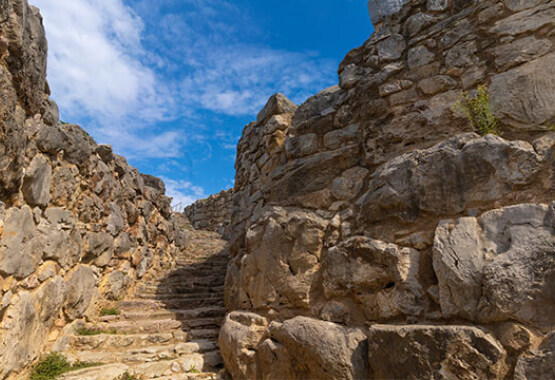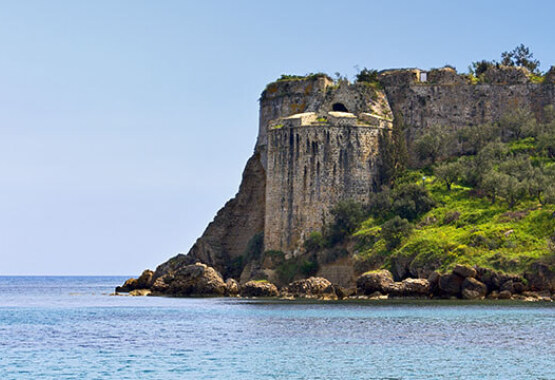
NAFPLIO
The charming and peaceful land of Argolida holds, within the bowels of its earth, one of the most important civilisations ever to see the light of day: the Mycenaean civilisation.
Mycenae – the city of the legendary Agamemnon
Homer and other writers of ancient Greek tragedy committed their names to memories which have passed into the collective unconscious of humanity. Agamemnon and Menelaus, Danaë and Perseus, Pelops and Atreus are the apparent forefathers of all of Europe, and the birthplace of all of these historical figures, is golden Mycenae. The earliest archaeological fragments indicate that the site of Mycenae was inhabited since the 7th millennium BC, from prehistoric times. In a dominant, naturally fortified position between the tranquil sloping hills of Profitis Ilias, and Sara, with a plentiful water supply, it was an ideal place for man to settle and live a protected life.
The apogee of the Mycenaeans, with their majestic architecture, inscribed monuments and sophisticated civilisation, occurred in the Late Bronze Age, between 1350 and 1200 BC. The first hegemonic factions appeared as early as 1700 BC, that is, in an historical period for which is difficult to determine exact details. But around this same period construction began on the first monumental tombs. After this, expansion developed at a dizzying speed. Palatial complexes, Cyclopean masonry which is awe-inspiring even today, the famous "Tomb of Agamemnon" (also known as the "Treasury of Atreus"), huge arches, fountains and ramparts comprise one of the greatest architectural complexes known to the ancient world.
The decline of Mycenae occurred around 1100 BC, possibly due to repeated damage from earthquakes and fires. They had managed, however, to have once been a truly great empire, which has indelibly stamped its reputation on the history not only of Greece, but the entire world.The archaeological site of Mycenae is 140km from Athens and 24km from Nafplio.
Archaeological Site of Mycenae
Walking in the footsteps of the Myth!
Following in the footsteps of mythologyThe charming and peaceful land of Argolida holds, within the bowels of its earth, one of the most important civilisations ever to see the light of day: the Mycenaean civilisation.
Mycenae – the city of the legendary Agamemnon
Homer and other writers of ancient Greek tragedy committed their names to memories which have passed into the collective unconscious of humanity. Agamemnon and Menelaus, Danaë and Perseus, Pelops and Atreus are the apparent forefathers of all of Europe, and the birthplace of all of these historical figures, is golden Mycenae. The earliest archaeological fragments indicate that the site of Mycenae was inhabited since the 7th millennium BC, from prehistoric times. In a dominant, naturally fortified position between the tranquil sloping hills of Profitis Ilias, and Sara, with a plentiful water supply, it was an ideal place for man to settle and live a protected life.
The apogee of the Mycenaeans, with their majestic architecture, inscribed monuments and sophisticated civilisation, occurred in the Late Bronze Age, between 1350 and 1200 BC. The first hegemonic factions appeared as early as 1700 BC, that is, in an historical period for which is difficult to determine exact details. But around this same period construction began on the first monumental tombs. After this, expansion developed at a dizzying speed. Palatial complexes, Cyclopean masonry which is awe-inspiring even today, the famous "Tomb of Agamemnon" (also known as the "Treasury of Atreus"), huge arches, fountains and ramparts comprise one of the greatest architectural complexes known to the ancient world.
The decline of Mycenae occurred around 1100 BC, possibly due to repeated damage from earthquakes and fires. They had managed, however, to have once been a truly great empire, which has indelibly stamped its reputation on the history not only of Greece, but the entire world.The archaeological site of Mycenae is 140km from Athens and 24km from Nafplio.




